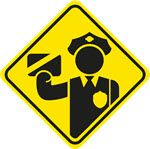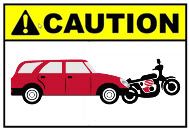|
- Home
- LIVING IN THAILAND
- DRIVING/VEHICLES
- Information for Drivers
- Driving Culture
|
Many of the driving rules in Thailand are the same or similar to other countries, but they are often ignored and only sporadically enforced. |
As a result:
Therefore, if you intend to drive a vehicle in Thailand, you should always be alert and have some familiarity with the driving culture and hazards. |
Traffic Laws you need to know
|
Although it may seem to be sporadic and sometimes ignored by Traffic Police, they still do enforce traffic laws at times. Violations will most likely result in a traffic fine. A ticket is issued and will usually involve a trip to the police station to pay it . |
Here are some of the Traffic Laws you should become familiar with:
|
Be Alert to Some Common Thai Driving Habits
| Many foreigners are involved in traffic accidents in Thailand, as they expect international rules will be followed and were not accustomed to the ways in which Thai people drive. Although many Thai drivers do follow Traffic Rules, there are also many that do not. Thus one should exercise caution and be aware of the hazards of driving in Thailand. |
Precautions Below are some things that you should be prepared for when driving in Thailand. Traveling on the streets and highways
Right Turn or U-Turn Crossovers on roads with a median
Controlled Intersections (approach with care)
Driving at night
|
Find us on: |




